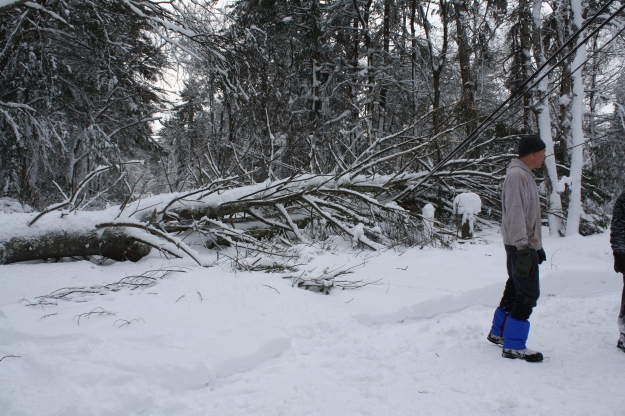More than halfway through winter, and here it is. I am completely uninspired. I’m sure the weather has something to do with this. It’s 40 degrees F and raining, with half-melted dirty snow banks slowly disappearing under the deluge, and plenty of mud. (I don’t mind April mud, it’s different in April!) End-of February rain holds no promise for me. No thoughts of seedlings, buds, sprouts, sunshine, or warmth. A walk through the Botanical Gardens yesterday confirmed that Kingston is indeed the land of broken trees, due to the blizzard. We have a big clean up coming, as soon as rain, mud and snow let up.
Although the Conservatory has some beautiful flowers blooming right now, (you can see them here) I think it is simply Springtime that I am longing for. There is something about the feel of the sun on my face, and the smell of the soil, that isn’t the same in the greenhouse. The greenhouse got me through December, January, and almost all of February, and I appreciate that! But I am ready to get outside.
In a few more weeks, I’ll be starting seeds. Around here gardeners plant peas on St. Patrick’s Day, March 17th. With transplants like tomato and pepper seeds, I aim for April Fool’s Day (April1st), so that they don’t get too big before it’s warm enough to set them out. Starting seeds brings back the optimist in me, daydreaming about the wonderful garden I will have. Just a few weeks to go…what will YOU do to get yourself to Spring?


























